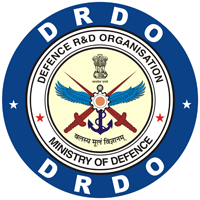Elastic-plastic Transition of Transversely Isotropic Thick-walled Rotating Cylinder under Internal Pressure
DOI:
https://doi.org/10.14429/dsj.59.1519Keywords:
Elastic-plastic transition, transversely isotropic cylinder, isotropic, rotating cylinderAbstract
Elastic-plastic stresses for a transversely isotropic thick-walled rotating cylinder under internal pressure have been obtained by using Seth’s transition theory. It has been observed that a thick-walled circular cylinder made of isotropic material yields at the internal surface at a high pressure as compared to cylinder made of transversely isotropic material. With the increase in angular speed, much less pressure is required for initial yielding at the internal surface for transversely isotropic material as compared to isotropic material. For fullyplastic state, circumferential stress is maximum at the external surface. Thick-walled circular cylinder made of transversely isotropic material requires high percentage increase in pressure to become fully plastic as compared to isotropic cylinder. Therefore, circular cylinder made of transversely isotropic material is on the safer side of the design as compared to cylinder made of isotropic material.Defence Science Journal, 2009, 59(3), pp.260-264, DOI:http://dx.doi.org/10.14429/dsj.59.1519
Downloads
Published
2009-05-01
How to Cite
Sharma, S., Sahni, M., & Kumar, R. (2009). Elastic-plastic Transition of Transversely Isotropic Thick-walled Rotating Cylinder under Internal Pressure. Defence Science Journal, 59(3), 260–264. https://doi.org/10.14429/dsj.59.1519
Issue
Section
Research Papers
License
 Where otherwise noted, the Articles on this site are licensed under Creative Commons License: CC Attribution-Noncommercial-No Derivative Works 2.5 India
Where otherwise noted, the Articles on this site are licensed under Creative Commons License: CC Attribution-Noncommercial-No Derivative Works 2.5 India

